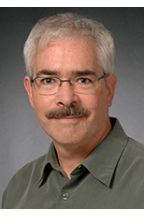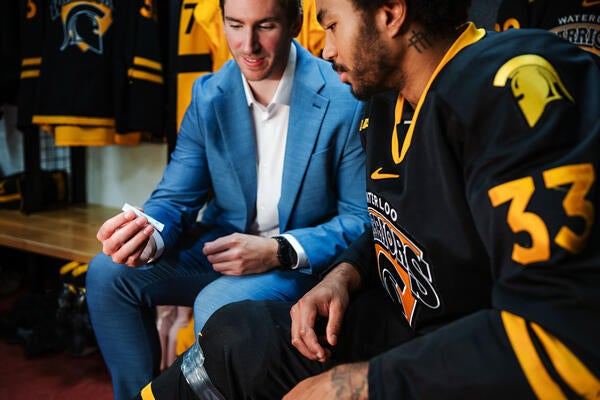
Protecting health-care workers from COVID-19
Engineering professor Bill Anderson part of major study on disinfection and reuse of PPE

Engineering professor Bill Anderson part of major study on disinfection and reuse of PPE
By Brian Caldwell Faculty of EngineeringA professor at Waterloo Engineering is contributing his expertise on ultraviolet (UV) light to a major study on the disinfection and potential reuse of personal protective equipment (PPE) by healthcare workers.
Led by researchers in New Zealand, the study builds on previous work on a two-step disinfection system for masks, gowns and other PPE that Bill Anderson collaborated on.

Bill Anderson is a professor of chemical engineering at Waterloo.
Anderson, a professor of chemical engineering at Waterloo, worked with peers in New Zealand to propose a disinfection process in April that combined storage for at least four days with treatment using either UV light, dry heat or chemicals to kill, or deactivate, coronavirus on used PPE.
Researchers in New Zealand have now received more than $1 million in government funding to develop and test a mobile version of the disinfection system to better protect frontline healthcare workers and slow the stream of PPE going into landfills.
Anderson said it is rewarding to see the work progressing after meeting his New Zealand collaborators online during the pandemic.
“It’s exciting to continue our work together to test and validate our ideas in a project that will involve use of the actual SARS-CoV-2 virus,” he said. “This isn’t something I would have been able to do here at Waterloo, so I’m happy to share my expertise with their multidisciplinary team to help ensure a rigorous and thorough study with valid conclusions.”
The project involves researchers at the University of Auckland and the University of Otago, and is led by Dr. Yvonne Anderson, who is not related to Bill Anderson.
“By conserving PPE and creating safe disinfection solutions, we create an insurance policy against running short of this essential equipment in the future, and may also stem what is proving to be a major problem for the environment,” she said in a media release today.
The research team will test the system in a highly contained laboratory at the University of Otago to determine if PPE can be safely reused.
Anderson expects to be involved in recommending experimental methods for the UV aspect of the study, providing data review and analysis once those experiments are running, and assisting with manuscript writing.

Read more
New medical device removes the guesswork from concussion screening in contact sports using only saliva

Waterloo researcher Dr. Tizazu Mekonnen stands next to a rheometer, which is used to test the flow properties of hydrogels. (University of Waterloo)
Read more
Plant-based material developed by Waterloo researchers absorbs like commercial plastics used in products like disposable diapers - but breaks down in months, not centuries

Read more
Here are the people and events behind some of this year’s most compelling Waterloo stories
Read
Engineering stories
Visit
Waterloo Engineering home
Contact
Waterloo Engineering
The University of Waterloo acknowledges that much of our work takes place on the traditional territory of the Neutral, Anishinaabeg, and Haudenosaunee peoples. Our main campus is situated on the Haldimand Tract, the land granted to the Six Nations that includes six miles on each side of the Grand River. Our active work toward reconciliation takes place across our campuses through research, learning, teaching, and community building, and is co-ordinated within the Office of Indigenous Relations.